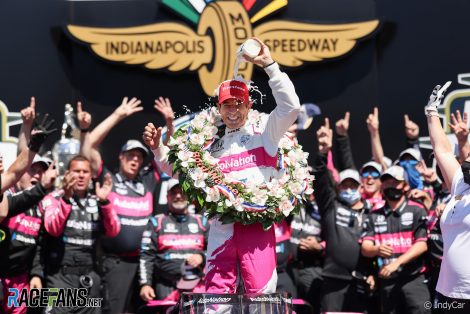Qualifying speeds not seen in a quarter of a century, and the prospect of the first five-time winner in history, have grabbed headlines and captured the imagination of fans in the build-up for the 106th Indianapolis 500. Will the race itself live up to the hype?
A week of practice, plus two days of time trials, saw drivers approach speeds not seen at the ‘Brickyard’ since 1996 – an era of open chassis, a two-faction tyre war, and larger displacement engines with more turbocharging pressure on tap than today’s cars enjoy.
What was behind the speed rises which yielded the fastest pole position run in history? Engine suppliers Chevrolet and Honda have continued to extract as much horsepower and efficiency from their 2.2-litre turbo-V6 engines this year, with Chevy holding a slight advantage in straight line speed.
A new coat of track sealant was also applied to the racing surface during the off-season. But other than that, the gains have come from what teams have been able to tease from their machines in the third year since the Aeroscreen transformed the look – and handling – of current IndyCars.
Optional aerodynamic components are still on offer for teams, as they were last year, to aid the quality of racing. Initial weather forecasts predict a warmer race than last year, but nothing unbearably hot for the end of May. There’s a real prospect that the fastest race record could be beaten if the driving standards match last year and the race is run with few incidents.
There’s no shortage of storylines heading into the 2022 edition of the Indy 500, headlined by Helio Castroneves’ pursuit of an unprecedented fifth victory.
Castroneves, 47, rolled back the years in last year’s race, fighting off the challenge of eventual IndyCar Series champion Alex Palou to tie the record of four Indy victories held jointly with A.J. Foyt, Al Unser Snr, and Rick Mears. In doing so, he also gave IndyCar upstarts Meyer Shank…

